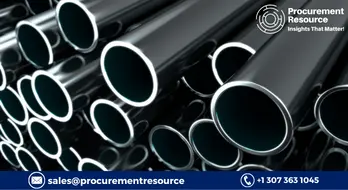China HR Steel Prices Again Declined Due to Sluggish Demand and Higher Inventory
.webp)
Prices for HR steel decreased once more in China as a result of debilitated demand and increased supply. Chinese ferrous futures declined as rising portside iron ore inventory and mounting steel stocks indicated a sluggish recovery in demand, despite recent data suggesting an improving economy.
At 841.50 yuan (USD 123.23) per tonne, the most actively traded May iron ore on China's Dalian Commodity Exchange DCIOcv1 closed daytime trade 2.2% down.
The benchmark March contract for the steelmaking ingredient on the Singapore Exchange, SZZFH3, was down 3.5% at USD 120.35 per tonne as of 0702 GMT.
Despite data revealing that new bank loans in China ramped up more than anticipated to a record 4.9 trillion yuan (717.21 billion) in January 2022.
Request Access For Regular Price Update of Steel
Steel mill profits have not increased, according to analysts at Huatai Futures. Prices of finished goods will fluctuate in the short term due to the ongoing rise in inventory.
According to the most recent stocks survey from Mysteel consultancy, Chinese merchants' steel inventories, which have been continuously expanding since late December, grew by 1.5 million tonnes for the period of February 3– February 9.
While other steel benchmarks also fell, SRBcv1 lost 1.6%, Wire rod SWRcv1 lost 1.7%, hot-rolled coil SHHCcv1 fell by 1.4%, and stainless steel SHSScv1 was down 0.5%.
To truly understand the state of the Chinese economy, industrial metals markets will need to wait until February and March's economic reports are out.
According to data from SteelHome consultancy, portside iron ore inventory increased last week to 138.5 million tonnes, the highest level since mid-September.
Coking coal DJMcv1 and coke DCJcv1 both experienced declines of 2.9% and 2.7%, respectively. Last week, higher-frequency trading volumes in construction steel hinted at the beginning of a flimsy recovery in steel demand, according to Widnell.
China's National Bureau of Statistics (NBS) announced that the country's annual GDP growth decreased to 3%, much below the declared objective of 5.5% in 2022, and that its economic slowdown may have global repercussions.
Vice-premier of the People's Republic of China Liu He, who spoke at the World Economic Forum in Davos in 2023, effectively outlined the issues and difficulties that China and the world economy are currently confronting.
They have gone through a variety of unexpected experiences during the last five years and have seen significant changes in the political and economic climate of the entire planet.
The Covid-19 outbreak snuffed out China's tale of growth. Also, somewhat behind IMF projections released in October 2022 was China's GDP growth. A GDP growth rate of about 4.4 percent was anticipated by the IMF.
Numerous issues, most notably China's isolation from the outside world as a result of the "Zero Covid" policy, were cited as the primary causes of the significant decrease in Chinese GDP growth in 2022. The rigorous "Zero Covid" policy, which resulted in recurrent lockdowns and the Communist Party's campaign against major industrial companies, as well as the ongoing real estate crisis, were mostly to blame for the poor progress.
The most alarming finding from the NBS statistics is that China, the so-called "manufacturing powerhouse" of the globe, had a very weak rise in industrial output in 2022, at 3.6% year over year, and even weaker in December, at 1.3%. An increase in COVID outbreaks and weak demand in November, according to senior NBS statistician Zhu Hong, reduced industrial production and put more strain on Chinese companies.
The factors weighing on the poor industrial growth included a compression on profits from anti-virus limitations in major manufacturing hubs like Guangzhou and Zhengzhou, as well as from the ongoing weight of a lengthy real estate crisis and declining exports.
According to NBS data published on November 22, profits decreased across 21 of 41 key industrial sectors, with the ferrous metals smelting and pressing sector experiencing the worst fall at 94.5%. Comparatively, the decline during the first 10 months was 92.7%.
The fact that many Chinese businesses are also subject to US and other Western penalties, particularly targeting Chinese IT firms that are allegedly infringing on data security and stealing patents, is another factor contributing to the industrial slowdown.
Read More About Steel Production Cost Reports - REQUEST FREE SAMPLE COPY IN PDF
As per Procurement Resource, despite recent data reflecting an improving economy, Chinese ferrous futures fell as rising portside iron ore inventory and rising steel stocks indicated a sluggish recovery in demand.
The most commonly traded May iron ore on China's Dalian Commodity Exchange DCIOcv1 closed trade 2.2% lower at 841.50 yuan (USD 123.23) per tonne. As of 0702 GMT, 52ZFH3, the benchmark March contract for the steelmaking component on the Singapore Exchange, was down 3.5% at USD 120.35 a tonne



.webp)
